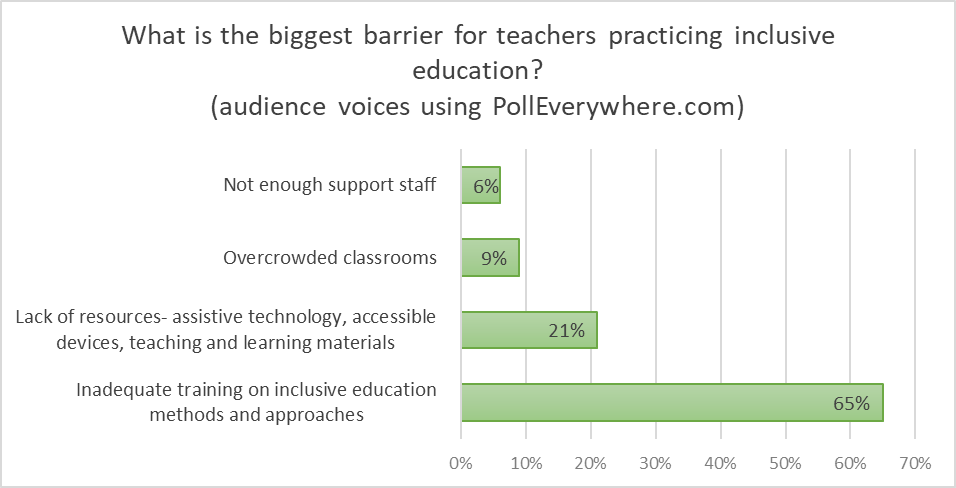This fireside chat between World Bank colleagues Omar Arias, Ezequiel Molina, and Adelle Pushparatnam delved into the evidence and the importance of understanding inclusive teaching practices at the classroom level as well as using World Bank’s classroom observation tool, Teach Inclusive, to gather data to inform systems, teacher training and professional development. The Teach tool was adapted with an inclusive lens drawing on the principle that “Inclusive teaching is better teaching for all.”
Teachers are using inclusive teaching practices - Data collected using past iterations of the Teach tool and the version that incorporates more inclusive teaching practices, showed that while teachers do an excellent job on teaching practices like employing multiple means of representation, there was room for improvement when it came to providing multiple means of engagement.
Classroom observation data to inform system strengthening: The data collected using Teach tool can help to open dialogue around stronger, more inclusive teacher training amongst policy makers, especially to develop inclusive national curriculums. Teach aims to revolutionize the way education system tracks and then improves teaching practices by assessing of what is happening in the classroom and what teachers are doing well. Thereby, identifying where further support is necessary.
To see the full effect of the policy shifts in learning outcomes for students, education systems should be able to track teaching practices and then move the needle on various aspects of instruction in a coherent way, which includes teacher training, and the interactions teachers have with their students, including those with disabilities.

Useful Resources from the session:
- If you want to learn how to improve the measurement of inclusive teaching practices watch this five-minute clip. For more information on Teach, classroom observation tool, please visit the Teach website, the newly launched Teach ECE website, and new video on Teach and its implementation to date.
- More on what the WB is doing on Teachers https://www.worldbank.org/en/events/2021/03/12/supporting-teachers-in-the-age-of-the-pandemic-the-world-bank-global-platform-for-successful-teachers#2
- If you want to learn about the Global Platform for Successful Teachers and how it is helping improve teacher policies, watch this recent event on supporting teachings in the age of the pandemic. To learn more about the World Bank’s Global Platform for Successful Teachers, please see the launch of the platform here and a recent blog
- If you want to learn how to improve teacher professional development to help teachers be effective, watch this five-minute clip . To learn more about Coach, please visit the Coach website or read this blog. The materials currently available for public consultations and feedback are:
- Foundational Teaching Skills Guide: For teachers, coaches, and school and pedagogical leaders, this document presents 11 Foundational Teaching Skills and provides step-by-step guidance on how to utilize them in the classroom and also scaffold, practice and coach on these skills. [PDF]
- Teacher’s Guide Diagnostic Tool Manual and Scoresheet: For policymakers, program designers, and other educational stakeholders, the Diagnostic Tool and its associated Scoresheet help assess the quality of existing Teacher Guides and provide recommendations for improvement. [PDF and PDF]
